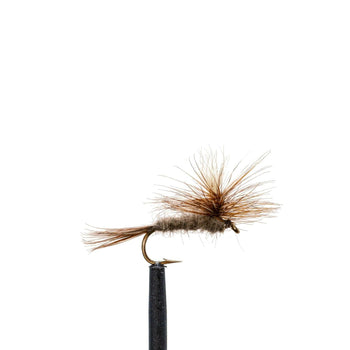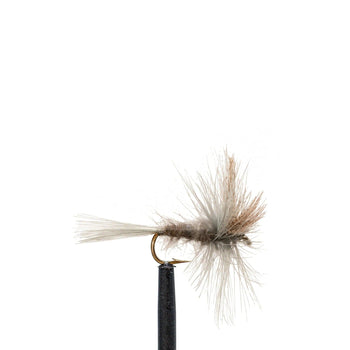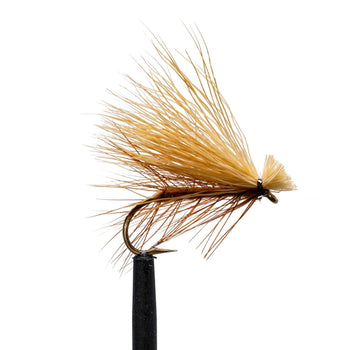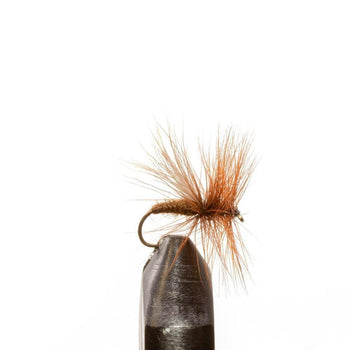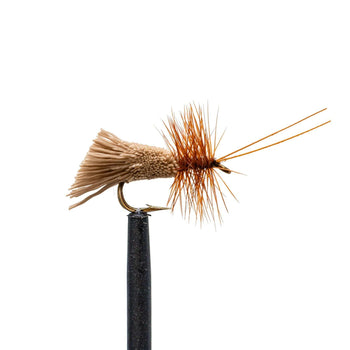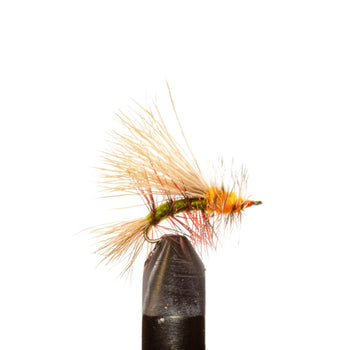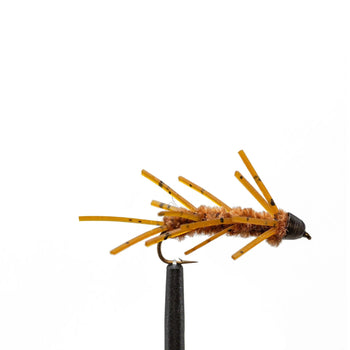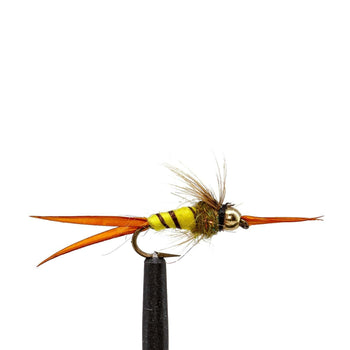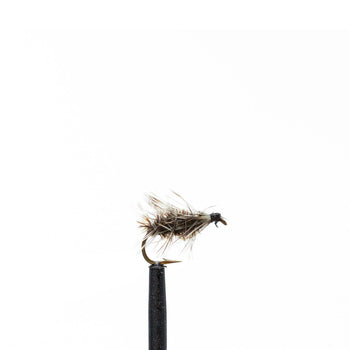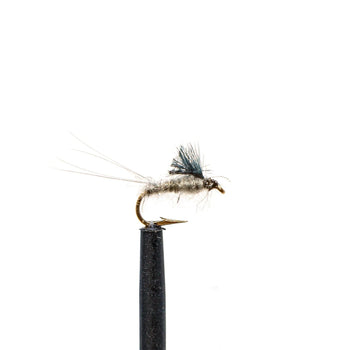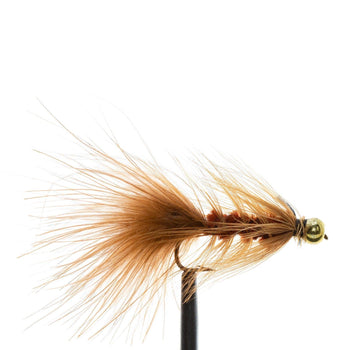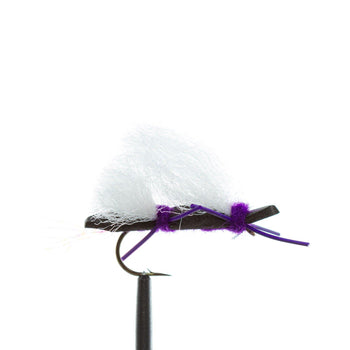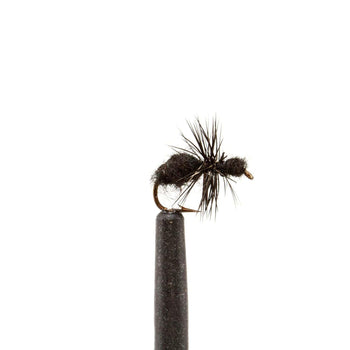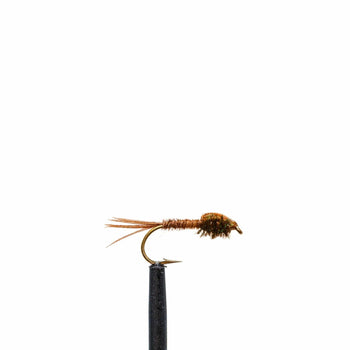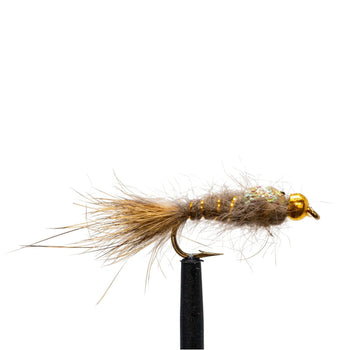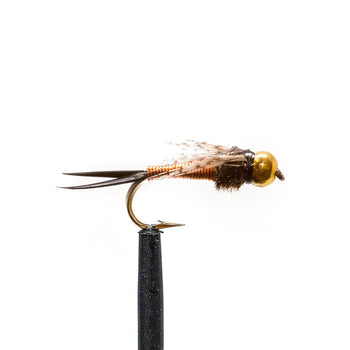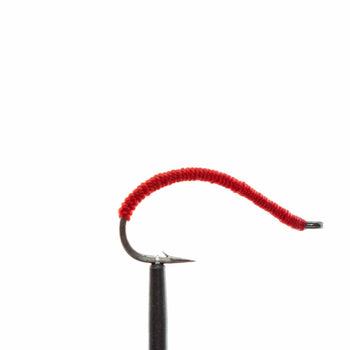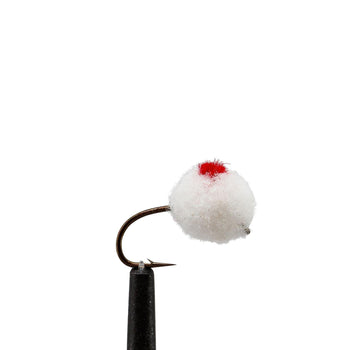Spring Fly Fishing Essentials: Top Strategies, Must-Have Gear, and 24 Critical Flies

Spring Fly Fishing: Essential Tips and Flies
As the snow melts and the rivers swell, anglers across the hemisphere gear up for the most exhilarating time of the year: spring fly fishing. This season not only brings about the awakening of dormant rivers and streams but also signals the start of a fantastic period of aquatic life activity, making it a prime time for fly fishing enthusiasts. Spring presents unique challenges and opportunities, and understanding the nuances of this season can lead to more successful outings. To help you make the most of your spring adventures, we've compiled some helpful tips and key tactics, an essential checklist, focusing on gear and the 24 essential flies you should not head out without.
1. Adapt to Changing Conditions
Spring weather and water conditions can be unpredictable, with varying flows and temperatures. Fish location and feeding habits adjust accordingly, making flexibility in tactics paramount. High, murky waters call for larger, brighter flies and a focus on slower, shallower edges where fish seek refuge. As waters clear and warm, match your approach to visible hatches and fish activity, shifting towards dry flies and emergers.
- High Water: During periods of high water, fish tend to move closer to the banks to escape the stronger currents. Target these areas with streamers or nymphs fished deep and slow.
- Water Clarity: Murky water requires brighter or larger flies to attract fish. Don't hesitate to use flashier patterns than you typically would.
2. Temperature Tracking
Spring fish activity levels are closely tied to water temperatures. Cooler mornings might necessitate deeper, slower techniques, transitioning to more surface-oriented strategies as the day warms and hatches become prevalent. Keeping a thermometer handy and knowing the preferred temperature ranges for your target species can guide your day's strategy.
- Early Morning: When the water is often coldest, fish might be lethargic. Use nymphs or streamers, and focus on deeper pools where fish might be conserving energy.
- Midday and Afternoon: As temperatures rise, look for hatches and active surface feeding. This is the time for dry flies and emergers.
3. Embrace the Hatch
Spring is prime time for significant insect hatches, which can vary from day to day. Observation is key—note what insects are present and their life stage. Matching your fly selection and technique to these conditions can dramatically increase your catch rate.
- Observe: Spend time watching the water before you start fishing. Look for signs of hatching insects and rising fish.
- Match the Hatch: Use flies that closely resemble the insects you see. Sometimes, size and silhouette are more important than color.
4. Master the Art of Stealth
With the clarity of spring waters, being stealthy and minimizing your presence can make or break your success. Approach fishing spots with care, avoiding sudden movements and shadows that can spook fish. Your presentation should be as natural as possible; learn to cast accurately and manage your line to prevent drag that can alert fish to your ruse.
- Approach with Care: Move slowly and stay low to avoid casting shadows over the water.
- Presentation: Perfect your ability to present flies naturally. This might mean mastering different casting techniques to deal with obstacles or learning to mend your line effectively to avoid drag.
5. Experimentation Leads to Discovery
Don't hesitate to experiment with flies and techniques. If a particular setup isn't working, switch things up. Sometimes, even a slight change in fly size or color, or adjusting your depth, can turn a slow day into a productive one.
- Change Flies Often: If you're not getting bites, don't hesitate to switch flies or even switch from dry flies to nymphs or streamers.
- Vary Your Techniques: Try different retrieval speeds and patterns when fishing with streamers. With nymphs, altering the depth can sometimes make a big difference.
6. Conservation and Respect
Finally, spring is a time of spawning for many fish species. It's important to fish responsibly:
- Spawning Areas: Avoid fishing over spawning beds (redds) to protect future generations.
- Catch and Release: Practice careful catch and release to ensure fish populations remain healthy. Use barbless hooks and handle fish with wet hands if you need to touch them.

Gear Up: The Spring Fly Fishing Checklist
Before we dive into the list of flies, let's ensure you have all the necessary gear for a successful and enjoyable spring fly fishing trip. Here's what you should pack:
- Fishing License: Always the first on the list, make sure your license is up to date.
- Fly Rod and Reel: Match your rod and reel to the type of fishing you'll be doing. Our Yellowstone II fly rod and Yellowstone Grizzly reel provide a top-notch pairing for a variety of fishing conditions. The ideal setup features a 9-foot, 5-weight fly rod which is an excellent starting point for spring fishing. For anglers looking for a comprehensive solution, our Combo Kits are designed to offer a harmonious fishing experience.
- Waders and Boots: Spring waters can be cold! Ensure your waders are leak-free and your boots provide good traction.
- Fly Fishing Vest: Our Adjustable Mesh Fishing Vest includes plenty of pockets that will help you keep your flies and tools organized.
- Fly Line, Leaders, and Tippets: JHFLYCO offers an extensive selection of fly lines, leaders, and tippets in various weights and lengths.
- Net: A good quality, fish-friendly net is essential for safely landing and releasing your catch. The JHFLYCO Carbon Landing Net Series is designed with both fish and fishers in mind.
- Sunglasses: Protect your eyes from UV rays and improve your visibility into the water.
- Hats and UV Protective Clothing: Don't be fooled by the mild spring sun; safeguard your skin with our hats and sun hoodies.
- First-Aid Kit: Always be prepared for minor injuries.
- Waterproof Bag: Our Waterproof Sling Pack and Waterproof Backpack keep your gear dry while offering ample storage space.
24 Essential Flies for Spring Fly Fishing
Spring offers diverse fishing opportunities, from hatching mayflies to spawning caddis. Having a variety of flies will prepare you for whatever conditions the spring throws your way. Here are 24 essential flies you should have in your box:
Mayflies
- Parachute Adams (Sizes 12-18): This all-around workhorse is adept at imitating a wide array of mayfly species. Its versatility makes it a must-have in any fly box, ready to match numerous hatches throughout the season.
- Blue Wing Olive (BWO) (Sizes 16-22): Essential for the early spring, this fly perfectly imitates the BWOs that are prolific during this time. Its smaller sizes cater to the natural delicacy of these early hatches, making it indispensable for accurate representation.
- Hendrickson (Sizes 12-14): Specifically designed to mimic the Hendrickson mayfly, this pattern excels during the early-season hatch. It's a critical fly for those periods when trout are selectively feeding on these particular mayflies, offering anglers a high chance of success.
Caddisflies
- Elk Hair Caddis (Sizes 14-18): The quintessential fly for representing emerging caddisflies, essential for successful fishing during active hatches.
- Brown Caddis (Sizes 12-16): Effectively mimics the natural appearance of caddisflies found throughout the early and late fishing seasons, making it a versatile choice in a range of conditions.
- Goddard Caddis (Sizes 12-16): With its high buoyancy and realistic silhouette, this fly excels in replicating the adult caddisfly. It's particularly effective in turbulent waters, where its ability to stay afloat and visible makes it a standout choice for attracting trout.
Stoneflies
- Olive Stimulator (Sizes 10-14): An excellent choice for imitating adult stoneflies, particularly in olive hues. Its size and coloration make it a versatile fly that can also double as a caddisfly imitator in a pinch, providing a great surface option during hatches.
- Conehead Coffee Rubber Legs (Sizes 8-12): This pattern excels at mimicking the nymph stage of stoneflies with its lifelike movement and weighted head. It's particularly effective in fast-moving waters, getting down to where the fish are feeding.
- Beadhead Micro Golden Stone (Sizes 12-16): Perfect for smaller stonefly nymphs, this fly adds a touch of realism with its beadhead, helping it to sink quickly and appeal to trout looking for a substantial meal. The golden coloration is ideal for mimicking a wide variety of stonefly species in different water conditions.
Midges
- Zebra Midge (Sizes 18-22): An indispensable part of any fly fisher's arsenal, especially in the spring. Its simplicity and effectiveness make it a go-to for mimicking the larval stage of midges, a common food source year-round.
- Griffith Gnat (Sizes 18-22): This fly shines when midges are clustering on the surface. Its design effectively imitates a group of midges, making it irresistible to trout feeding on the surface.
- RS2 (Sizes 18-22): Adding to the versatility of your midge selection, the RS2 is perfect for those times when fish are keyed in on emerging midges. Its subtle design and lifelike appearance make it an excellent choice for imitating the delicate pupa stage of midges, completing your midge fly lineup.
Streamers
- Wooly Buggers (Sizes 6-12): The quintessential streamer, its versatility allows it to mimic everything from small baitfish to leeches and other underwater prey. A must-have in any fly box for its ability to attract fish in a variety of conditions.
- Muddler Minnow (Sizes 6-10): Excelling at imitating larger baitfish, this pattern is a top choice for tempting bigger predatory species. Its buoyant head can also create enticing disturbances on the water surface, mimicking injured fish.
- Clouser Minnows (Sizes 2-12): Adding this fly introduces a significant range in size and color options, making it incredibly effective for deeper water fishing and targeting species that feed on small fish. Its weighted eyes help it dive into feeding zones, while its streamlined design allows for a lifelike swimming action.
Terrestrials (For Late Spring)
- Black/Purple (Knockout) Chubby Chernobyl (Sizes 10-14): This variation of the Chubby Chernobyl combines the enticing visibility of purple with the natural silhouette of the black, making it a versatile and highly effective option for targeting fish feeding on larger terrestrials. Its buoyant design allows for excellent floatation, even in choppy water.
- Black Ant (Sizes 14-18): Ants are a consistent food source for trout throughout the spring and summer months. The Black Ant pattern is especially effective on calm days when these insects are likely to be blown into the water.
- Chernobyl Ant Green (Sizes 8-12): Offering both visual appeal and a substantial silhouette on the water, the Chernobyl Ant in green is great for imitating a variety of larger terrestrials, such as grasshoppers and crickets, during the warmer months.
Nymphs
- Pheasant Tail Nymph (Sizes 12-18): A staple in fly fishing, this nymph imitates a broad spectrum of mayfly nymphs. Its natural appearance and subtle movements make it irresistible to trout, making it a go-to pattern for mimicking a wide array of nymphs.
- Beadhead Hare's Ear Flashback (Sizes 12-18): Renowned for its versatility, the Beadhead Hare's Ear Flashback can represent various natural nymphs and larvae. The buggy texture of the hare's ear fur gives it a lifelike quality that is highly effective in enticing wary fish.
- Copper John (Sizes 12-18): When you need to reach deeper feeding zones, the Copper John, with its weighted body, sinks quickly to where the fish are. Its bright flash and attractive colors make it an excellent choice for catching the attention of fish in deeper or faster-moving water.
Worms & Eggs
- San Juan Worm (Sizes 10-14): Especially effective following rainfall, this pattern mimics the natural worms that get washed into the water, a tempting meal for trout and other species. Its simplicity and effectiveness make it a must-have.
- Egg Patterns (Sizes 10-14): Critical during spawning seasons, these patterns replicate the look of fish eggs in the water, appealing to the instinctual feeding habits of trout. Their bright colors and soft texture offer an irresistible target.
- Sparkle Worm (Sizes 12-16): Adding a touch of flair to the traditional worm pattern, the Sparkle Worm incorporates flash and vibrancy, making it an attractive option under various conditions. This variation is particularly effective in murky water or when you need to grab the attention of fish with something a little different.
Spring fly fishing offers a blend of challenges and rewards unmatched by any other season. By preparing with the right gear and flies, understanding the conditions, and employing thoughtful tactics, anglers can enjoy some of the year's most memorable fishing experiences.


